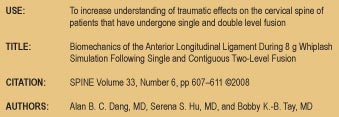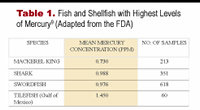 Chiropractors and the Nervous System
Chiropractors and the Nervous SystemResearch also documents that laser can simulate spinal cord regeneration. It was found that when the laser was applied to the spine, it significantly improved the average length of axonal re-growth and increased the total number of axons after spinal cord injury. 16
How Does Treating the Brain Affect the Body?
Research documenting that treating the brain could affect the function of the whole body began in the 1970s. Research at UCLA School of Medicine established that descending inhibitory pathways can inhibit pain. This may explain how treating the brain, and even cranial adjusting, can have such powerful, full-body effects.17
Lasers, Depression, and Addiction
LLLT has been shown to be helpful for depression because infrared laser light produces natural opioids and serotonin in the brain.18 The best study on lasers and addiction was done on cigarette smokers. All of the patients who received laser therapy experienced a lessening of withdrawal symptoms and 92 percent of them stopped smoking.19
The New Frontier: Laser Brain Treatment
About five years ago, researchers began to document the value of directly treating the brain with lasers. The first studies in 2006 found that animals that had strokes and were treated with LLLT had a significant improvement in neurological function. 20 21 22
Lasers and Degenerative Brain Disease
Amyotrophic Lateral Sclerosis (ALS) is characterized by progressive loss of motor function and death. Researchers found that by placing the laser directly on the skull, motor function was significantly improved. 23 Another recent study was performed on Parkinson’s disease patients. It was found that laser treatment normalized neurological activity and reduced Parkinson’s symptoms after a single, brief treatment.24
Major Medical Research
:quoteright_open:There is no question that clinicians who use lasers to treat the spine and extremities treat the spinal cord indirectly. If a doctor places an infrared laser on a patient’s back, six percent of the photons enter the spinal cord; thus, chiropractors are always treating deeper structures.:quoteright_close:Harvard Medical School recently studied 10 patients with depression and anxiety. A 250 milliwatt LED was placed on the forehead just a few millimeters above the skin. The researchers noted a significant decrease in depression and anxiety that lasted for four weeks after only one treatment.25 Following this Harvard study, there have been more human studies that demonstrate tremendous benefits from laser therapy on the brain. In the second major human study, 660 patients received laser therapy applied to the skull. Researchers noted a favorable outcome after 90 days and found that the laser was able to penetrate about five inches. The study was performed at some of America’s best medical schools, including UC San Diego, Stanford University, Scripps Hospital, University of Massachusetts, University of Pennsylvania, and Boston University. 26
Wavelength and Dose
Research documents that laser therapy stimulates an increase in ATP, RNA/DNA synthesis, oxygen, and cell metabolism.27Also, it has been found that when treating almost any area of the body, treatment is ineffective if the dose is too low or too high.28 29
It is important that one consider dose because only three percent of the photons delivered to the forehead-scalp surface will reach the cortex.30
Summary
The value of using lasers to directly treat the brain is still in the experimental stage. Yet, it is being validated on human subjects by noted researchers in major medical schools and hospitals with quite dramatic clinical results. Based on the positive findings of these groundbreaking studies, I expect lasers to be an integral part of complementary neurological therapy in the near future. And because chiropractors have been trendsetters in the use of lasers and the nervous system, they should use this information to help them continue to be leaders in this field. Understanding the latest trends in medical research regarding laser and the central nervous system is the first step.
Reference:
- Huang, YY, et al. Dose-Response. 2009;7(4):358.
- Karu TI, et al. Nonmonotonic behavior of the dose dependence of the radiation effect on cells in vitro exposed to pulsed laser radiation at 820 nm. Lasers Surg Med. 1997;21(5):485-492.
- Tuner, J., & Hode, L. (2004). The Laser Therapy Handbook. Grangesberg, Sweden: Prima Books.
- Demir, H. (2004). Comparison of the effects of laser and ultrasound treatments on experimental wound healing in rats. J Rehabil Res & Dev, Sept/Oct;41(5).
- Lirani-Galvão, AP (2006). Comparative study of how low-level laser therapy and low-intensity pulsed ultrasound affect bone repair in rats. Photomed Laser Surg, Dec;24(6):735-40.
- Medlicott, MS. (2006). A systematic review of the effectiveness of exercise, manual therapy, electrotherapy, relaxation training, and biofeedback in the management of temporomandibular disorder. Phys Ther, Jul;86(7):955-73.
- Bjordal, JM. (2007). Short-term efficacy of physical interventions in osteoarthritic knee pain. A systematic review and meta-analysis of randomised placebo-controlled trials. BMC Musculoskelet Disord, Jun;22;8:51.
- Kato, MT. (2006). TENS and low-level laser therapy in the management of temporomandibular disorders. J Appl Oral Sci, Apr;14(2):130-5.
- Bjordal JM, et al. Low-level laser therapy for tendinopathy: Evidence of a dose-response pattern. Phys Ther Rev. 2001;6:91-99.
- Byrnes KR, et al. Light promotes regeneration and functional recovery and alters the immune response after spinal cord injury. 2005 Mar;36(3):171-85.
- Oron U, et al. Enhanced liver regeneration following acute hepatectomy by low-level laser therapy. 2010 Oct;28(5):675-8.
- Yang Z, et al. Low-Level Laser Irradiation Alters Cardiac Cytokine Expression Following Acute Myocardial Infarction: A Potential Mechanism for Laser Therapy. 2011 Feb 24.
- Albrecht PJ, et al. Pathologic alterations of cutaneous innervation and vasculature in affected limbs from patients with complex regional pain syndrome. Pain. 2006; 120:244-266.
- Wasner G, et al. Vascular abnormalities in acute reflex sympathetic dystrophy (CRPS I): Complete inhibition of sympathetic nerve activity with recovery. Arch Neurol. May 1999;56(5):613-20.
- Gibbs GF, et al. Unravelling the pathophysiology of complex regional pain syndrome: Focus on sympathetically maintained pain. Clin Exp Pharmacol P. 2008;35:717-724.
- Wu X, et al. 810 nm Wavelength light: an effective therapy for transected or contused rat spinal cord. Lasers Surg Med 2009;41:36-41.
- Mayer DJ, et al..Analgesia from electrical stimulation in the brainstem of the rat, Science. 1971 Dec 24;174(16):1351-4.
- Hagiwara S, et al. Pre-Irradiation of blood by gallium aluminum arsenide (830 nm) low-level laser enhances peripheral endogenous opioid analgesia in rats. Anesth Analg. 2008 Sep;107(3):1058-63.
- Catherine M., et al. Low level laser for the stimulation of acupoints for smoking cessation: a double blind, placebo controlled randomised trial and semi structured interviews. Journal of Chinese Medicine, Number 86, February, 2008.
- Oron A, et al.. Low-level laser therapy applied transcranially to rats after induction of stroke significantly reduces long-term neurological deficits. Stroke. 2006 Oct;37(10):2620-4.
- Lapchak PA, De Taboada L. Transcranial near infrared laser treatment (NILT) increases cortical adenosine-5=-triphosphate (ATP) content following embolic strokes in rabbits. Brain Res 2009;1306:100-105.
- Rochkind S, et al. Increase of neuronal sprouting and migration using 780 nm laser phototherapy as procedure for cell therapy. Lasers Surg Med. 2009 Apr;41(4):277-81.
- Moges H, et al. Light therapy and supplementary riboflavin in the SOD1 transgenic mouse model of familial amyotrophic lateral sclerosis (FALS). Lasers Surg Med 2009; 41:52-59.
- Trimmer PA, et al.Reduced axonal transport in Parkinson’s disease cybrid neurites is restored by light therapy. Mol Neurodegener. 2009 Jun 17;4:26.
- Schiffer F, et al. Psychological benefits 2 and 4 weeks after a single treatment with near infrared light to the forehead: a pilot study of 10 patients with major depression and anxiety. Behav Brain Funct. 2009 Dec 8;5:46.
- Zivin J, et al: Effectiveness and safety of transcranial laser therapy for acute ischemic stroke. Stroke 2009, 40:1359-1364.
- Lapchak PA, et al.. Transcranial near infrared laser treatment (NILT) increases cortical adenosine-5=-triphosphate (ATP) content following embolic strokes in rabbits. Brain Res 2010;1306:100-105.
- Bjordal JM; et al.. A systematic review of low level laser therapy with location-specific doses for pain from chronic joint disorders. Aust J Physiother. 2003;49(2):107–16.
- Frigo L, et al. The effect of low-level laser irradiation on melanoma in vitro and in vivo. BMC Cancer. 2009;9:404.
- Wan S, et al. Transmittance of nonionizing radiation in human tissues. Photochem Photobiol 1981;34:679-681.


 So what is an adaptogen? According to Webster’s Dictionary, “an adaptogen is a nontoxic substance and especially a plant extract that is held to increase the body’s ability to resist the damaging effects of stress and promote or restore normal physiological functioning”. In medical terms, a highly efficacious adaptogen helps to bring the body into homeostatic balance.
So what is an adaptogen? According to Webster’s Dictionary, “an adaptogen is a nontoxic substance and especially a plant extract that is held to increase the body’s ability to resist the damaging effects of stress and promote or restore normal physiological functioning”. In medical terms, a highly efficacious adaptogen helps to bring the body into homeostatic balance.
 In 1963 the unique active ingredient found only in Panax ginseng was discovered, plant triterpene saponins called ginsenosides. The number of different types of ginsenosides determines the range of the adaptogenic capacity of the ginseng. Different ginsenosides have shown in clinical research to have different effects, sometimes opposing effects. For example, some increase blood pressure while others reduce blood pressure, some increase blood glucose while others reduce blood glucose. The ginsenosides in combination with the 32 minerals, 14 amino acids, organic germanium and 7 vitamins and polysaccharides make a remarkable synergy that bring the body into balance.
In 1963 the unique active ingredient found only in Panax ginseng was discovered, plant triterpene saponins called ginsenosides. The number of different types of ginsenosides determines the range of the adaptogenic capacity of the ginseng. Different ginsenosides have shown in clinical research to have different effects, sometimes opposing effects. For example, some increase blood pressure while others reduce blood pressure, some increase blood glucose while others reduce blood glucose. The ginsenosides in combination with the 32 minerals, 14 amino acids, organic germanium and 7 vitamins and polysaccharides make a remarkable synergy that bring the body into balance.







